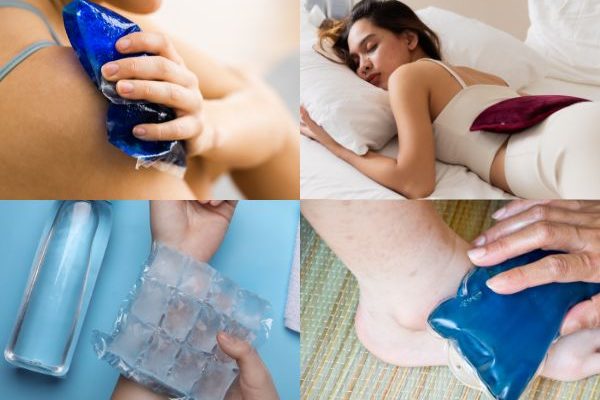
Heat and cold therapy are common physiotherapy treatments. Heat therapy increases blood flow, reduces muscle spasms, and relieves pain, using hot packs, heat lamps, or warm water. Cold therapy reduces inflammation, numbness, and muscle spasms, using ice packs, cold water, or cooling devices. Physiotherapists assess each patient's needs and use these modalities to manage musculoskeletal conditions and promote healing.
A collection of frequently asked questions and answers, providing essential information on various topics.
Heat and cold therapy are common physiotherapy treatments. Heat therapy increases blood flow, reduces muscle spasms, and relieves pain, using hot packs, heat lamps, or warm water. Cold therapy reduces inflammation, numbness, and muscle spasms, using ice packs, cold water, or cooling devices. Physiotherapists assess each patient's needs and use these modalities to manage musculoskeletal conditions and promote healing.
Heat and cold therapy are essential physiotherapy treatments, offering various benefits. Heat therapy, like hot packs or infrared lamps, increases blood flow and relaxes muscles, aiding conditions like strains, arthritis, and chronic pain. Cold therapy, such as ice packs or cryotherapy, reduces inflammation, numbs pain, and slows metabolic processes, making it useful for acute injuries like sprains. Combining heat and cold therapy provides a comprehensive approach to managing musculoskeletal conditions, optimizing healing and improving patient outcomes.
Heat and cold therapy are non-invasive treatments for physical conditions. Heat therapy can alleviate muscle soreness, stiffness, and joint pain by increasing blood flow and reducing inflammation. Cold therapy is effective for acute injuries, constricting blood vessels, reducing swelling, and numbing pain. Both can disrupt pain signals and provide relief for nerve-related conditions and chronic pain. As accessible, drug-free options, heat and cold therapy can manage various musculoskeletal and neurological issues when used alongside other treatments.
Heat and cold therapy duration depends on the condition and healthcare guidance. For acute issues, 10-15 minutes several times daily is common. For chronic conditions, 15-20 minutes once or twice daily may be advised. Follow healthcare professional recommendations on duration and frequency based on your individual needs and tolerance.
Physiotherapy using heat or cold can have side effects. Excessive or improper use of heat can cause burns, redness, swelling, and increased pain, especially in those with poor circulation or reduced sensation. Cold therapy can lead to frostbite, numbness, and muscle stiffness if applied incorrectly. Physiotherapists must carefully assess each patient and follow proper techniques to minimise risks and ensure safety and comfort.
Before heat or cold physiotherapy: - Inform your physiotherapist of any medical conditions, allergies or sensitivities, so they can tailor the treatment. - Wear loose, comfortable clothing for easy access to the treatment area. - Stay hydrated by drinking water beforehand. - Consider taking pain medication 30 minutes prior to manage discomfort. - Arrive early to relax and mentally prepare for the session.